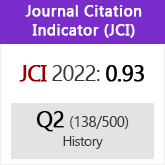The development of the karabela hilt on swords and sabers: a comparative study
DOI:
https://doi.org/10.3989/gladius.2016.0009Keywords:
Karabela hilt, beaked pommel, city of Karbala, Mameluk sword, Persian shamshir, Ottoman Turkish sabers, Polish sabers, Omani sword, Imam Hossein shrine, jineta sword, Sassanid sword, Byzantium, Sultan Selim I, Shah Abbas I, Sultan SuleymanAbstract
The karabela hilt is described as a hilt with a crossguard and a pommel in the shape of a stylized head of a bird most often similar to a hawk. This type of handle was usually mounted on long cavalry saber blades. In general, karabelas were mounted with different types of blades, often those of a wedged-shape, curved blade of a classical Persian shamshir. The oldest karabelas (of Turkish origin or based on Turkish models) that are preserved in the museums of Poland, generally have blades with a raised back edge called a yelman. The main feature of the socalled `saber of hawk`, a characteristic form of a curved pommel resembling the head of a hawk and a cross guard, is closely associated with karabela. The main goal of the present article is to do a comparative study on different sources on sabers and swords with a karabela hilt and try to establish an origin of this type of hilt.
Downloads
References
Allan, J. (2003): «Early Safavid Metalwork». Jon Thompson and Sheila R. Canby (eds.), Hunt for Paradise. Milan: Skira Editore: 203-247.
Aydin, H. (2012): Sultanlarin Silahlari: Topkapi Sarayi Silah Koleksiyonu / Hilmi Aydin. Ankara: Kül tür ve Turizm Bakanlı?ı.
Biernacki, C. (1900): «Karabela». S. Orgelbranda ?n??klopedia Powszechna z Ilustracjami i Mapami.?. VIII. Od Litery K do Kruszy?ski. Warszawa: Wydawnictwo Towarzystwa Akcyjnego Odlewni Czcionek I Drukarni S. Orgelbranda Synów: 103.
Bruhn de Hoffmeyer, A. (1961): «Introduction to the History of the European Sword». Gladius , ?: 30-75. https://doi.org/10.3989/gladius.1961.212
Bruhn de Hoffmeyer, A. (1966): «Military Equipment in the Byzantine Manuscript of Scylitzes in Biblioteca Nacional de Madrid». Gladius, V: 1-194.Chody?ski, A. (ed.) (2000): Or?? Perski i Indoperski XVI–XIX wieku ze zbiorów Polskich. Malbork: Muzeum Zamkowe w Malborku.
Dziewanowski, W. (1935): Zarys dziejów uzbrojenia w Polsce . Warszawa: G?ówna Ksi?garnia Wojskowa.
Dziewulski, M. (2007): «Oriental Influences on Polish Arms». Ethnographic Arms and Armor Seminar in Timonium, 17th March 2007. Michal Dziewulski. Електрон. дані: 1-35. http://www.vikingsword. com/ethsword/Dziewulski01.pdf
Elgood, R. (1994): The Arms and Armour of Arabia in the 18th–19th and 20th Centuries. Vermont, Scolar Press.
Farrokh, K. (2005). Sassanian Eilte Cavalry AD 224-642. Oxford: Osprey Publishing Ltd.
Harper, P. O. (1978): The Royal Hunter: Art of the Sassanid Empire. New York, The Asia House Gallery.
Harper, P. O. (1961): «The Senmurv». Metropolitan Museum of Art Bulletin, New York, v. 20, no. 3, November: 95-101. https://doi.org/10.2307/3257932
Hartleb, Z. (1926): Szabla polska . Lwów; Warszawa; Kraków: Wyd. Zak?adu Narodowego im. Ossoli?skich, 59.
Janiak, R. (2007): «Pasja zbierania. Kolekcja Ryszarda: katalog wystawy». Ryszard de Latour, Anna
Khorasani, M. M. (2006): Arms and Armor from Iran: The Bronze Age to the End of the Qajar Period. Tübingen: Legat Verlag.
Khorasani, M. M. (2008): «Dragons Teeth: The Straight Swords of Persia». Classic Arms and Militaria Volume XV Issue 1: 21-25.
Khorasani, M. M. and Szántó, I. (2012): «Straight Swords in Iran: A Continuing Tradition (A perzs pallos: egy töretln hagyomány)». Persian Treasures - Hungarian Collections (Perzsa Kincsk - Magyar
Lebedynsky, I. (1990): Armes Cosaques et Caucasiennes et les Armes Traditionnelles d'Europe Orientale. La Tour du Pin: Éditions du Portail.
Lebedynsky, I. (1992): Les Armes Orientales. La Tour du Pin: Editions du Portal.
Ledóchowski, S. (1980): Polskie szable paradne. Warszawa: KAW.
Lepkowski, J. (1857): Bro? sieczna w ogóle i w Polsce uwa?ana archeologicznie / przez. Kraków: Czcionkami «CZASU».
Lukonin, W. and Ivanov, A. (2003): Die Kunst Persiens: die verlorenen Schätze. London: Sirocco.
Masia, K. (2000): «The Evolution of Swords and Daggers in the Sasanian Empire». Iranica Antiqua, vol. XXXV: 185-289. http://dx.doi.org/10.2143/ia.35.0.519101 https://doi.org/10.2143/IA.35.0.519101
Meyer, S. (1934): «Typy szabel polskich». Stanis?aw Meyer. Bro? i Barwa. R.I, no 4: 66-72.
Meyer, S. (1935): «Genealogja szabli polskiej», Bro? i Barwa R. II, no. 5: 98-105.
Nadolski, A. (1984): Polska bro?. Bro? bia?a . Wroc?aw: Zak?ad Narodowy imienia Ossoli?skich.
Nicolle, D. (1999): Arms and Armour of the Crusading Era 1050-1350. Islam, Eastern Europe and Asia. London: Greenhill Books.
North, A. (1982): Introduction to European Swords. London: Stemmer House Pub.
Oakeshott, E. (1998): The Sword in the Age of Chivalry, Woodbridge. PMCid:PMC2665566
Pinchot, O. (2002): «The Persian Shamshir and the Signature of Assdaollah». Arms Collecting, vol. 40, no. 1: 3 - 11.
Pyhrr, S.; Godoy, J. and Leydi, S. (1998): Heroic Armor of the Italian Renaissance: Filippo Negroli and His Contemporaries. New York: Metropolitan Museum of Art.
Snodgrass, A. (1967): Arms and Armour of the Greeks. Ithaca: Thames and Hudson, Cornell University Press. PMCid:PMC1468527
Soudavar, Abolala (2003): The Aura of Kings: Legitimacy and Divine Sanction in Iranian Kingship. Costa Mesa: Mazda Publishers.
Tarassuk, L. and Blair, C. (eds.) (1982): The Complete Encyclopedia of Arms & Weapons. New York: Simon and Schuster.
Yücel, Ü. (2001): Islamic Swords and Swordsmiths. Istanbul: O. I. C. Research Centre for Islamic History, Art and Culture, IRCICA. Бехайм В. (1995): Энциклопедия оружия [пер. с нем. А. Девель и др.]. СПб.: Санкт-Петербург. оркестр.
Введенский Г. (2003): Ятаган: факты и гипотезы. Антиквариат, предметы искусства и коллекционирования. № 5. С. 96-99.
Горелик М. (2004): Об одной разновидности евразийских клинков эпохи развитого средневековья. Военное дело народов Сибири и Центральной Азии: cб. науч. трудов. — Новосибирск, Вып.1.
Квасневич В. (2006): Польские сабли. [пер. c пол.]. СПб.: Атлант.
Кулинский А. (2003): Европейское холодное оружие. СПб.: Атлант.
Лайбле Т. (2008): Меч. Большая иллюстрированная энциклопедия [пер. с нем.]. М.: Омега.
Носов, К. (2011): Традиционное оружие Индии. М.: Эксмо.
Сокольский Н. (1954): Боспорские мечи, М.: Изд-во АН СССР, 170 с. (Материалы и исследования по археологии СССР.; т. 33).
Уизерс Х., Дж. (2011): Мечи и сабли. Большая энциклопедия [пер. с англ.]. М.: Изд-во Наше слово; ЭКСМО.
Downloads
Published
How to Cite
Issue
Section
License
Copyright (c) 2016 Consejo Superior de Investigaciones Científicas (CSIC)

This work is licensed under a Creative Commons Attribution 4.0 International License.
© CSIC. Manuscripts published in both the printed and online versions of this Journal are the property of Consejo Superior de Investigaciones Científicas, and quoting this source is a requirement for any partial or full reproduction.All contents of this electronic edition, except where otherwise noted, are distributed under a “Creative Commons Attribution 4.0 International” (CC BY 4.0) License. You may read here the basic information and the legal text of the license. The indication of the CC BY 4.0 License must be expressly stated in this way when necessary.
Self-archiving in repositories, personal webpages or similar, of any version other than the published by the Editor, is not allowed.














